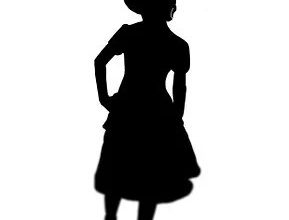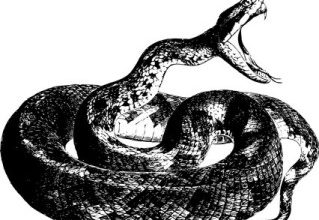
Any Woman by Katharine Tynan is an expression of the poet’s perspective of motherhood. It revolves around the themes of self-sacrifice and strength that accompanies motherhood. According to the poet, the mother is the cornerstone of the household, and the home would not exist without her. This is largely reflective of her own motherhood, as she loved the role she chose as a mother and homemaker. Life at home and domestic harmony were themes she wrote about quite often in her poetry. Because a person is a product of the time s/he’s living in, Any Woman is fraught with ideas that were prevalent in the 19th century
This 24-line poem is split into six quatrains, that is, four-line stanzas. The rhyme scheme ABAB is followed in all stanzas except the first. The first stanza does not have a specific rhyme scheme. This poem uses strong imagery and metaphor, as the strength of the mother is explained using the metaphor of a house.
Any Woman | Summary and Analysis
Any Woman | Analysis, Lines 1-4
I am the pillars of the house;
The keystone of the arch am I.
Take me away, and roof and wall
Would fall to ruin me utterly.
The first stanza explains the importance of the mother in the family, and this is shown using the symbolism of the keystone and the pillars. The pillars of a house are what hold up the house and maintain its strength and safety. The pillars carry the burden of the form of the house, and their presence keeps the house structurally sound. The keystone of the arch is the stone at the summit of the arch, the one that holds the curve together. Without this stone, the arch would be disjoint and would break. The arch needs the keystone to stay upright, the house needs the pillars to stay upright, and a home needs the mother to stay upright.
In the way that the pillars and the keystone are crucial to their respective structures, the mother is crucial to the strength of the home. Should she be removed, the home would be ruined. The poet uses the metaphor of a house to represent the role of the mother in her family, and so the removal of the central support would lead to destruction. The removal of the mother, however, would not ruin just her family, but her as well. She says, “would fall to ruin me entirely”. This conjures an image of a house imploding on itself, breaking apart and crumbling. In the same way, the mother is so devoted to her children that her being taken away would ruin them, and this consequence is akin to her own crumbling. Her absence would leave an emptiness in her family, and this leaves her distraught.
Any Woman | Analysis, Lines 5-12
I am the fire upon the hearth,
I am the light of the good sun,
I am the heat that warms the earth,
Which else were colder than a stone.
At me the children warm their hands;
I am their light of love alive.
Without me cold the hearthstone stands,
Nor could the precious children thrive.
The second and third stanzas revolve around the warmth that a mother brings to everyone around her. Without her, the world would be cold and barren, and it is her love that fills the Earth with light and love. The mother is the source of life, and she is the reason for the comfort that a child feels. She supports and encourages them to succeed, and they thrive due to the love that the mother gives them.
In a home, the hearth is the focal point of the room. It is an area in front of the fireplace and is the main source of heat to the house. The families at that time would gather around the hearth, and it was also often used to cook food. It symbolizes protection, love, and comfort. For example, in Greek mythology, Hestia was the goddess of the hearth, which is explained as the goddess of home, family, and domesticity. This is the same symbolism used here, where the mother is the hearth of the family, the one who loves, protects, and comforts.
She is the “fire upon the hearth” which shows that she is strong and bright. Fire represents new life and illumination, and the mother is the one who brings new life into the world. She burns brightly and brings heat and light that warms the cold, stony world. Without her, the hearth would be empty, and there would be no protection and warmth. She is the one that the children turn to when they need anything, and she is a vision of love and light. The mother embodies and radiates love and warmth, and it is her support that allows the children who depend on her to grow and develop.
Here, the ABAB rhyme scheme can be seen, as the first and third lines rhyme, and the second and fourth lines rhyme of each stanza. Anaphora is used in “I am” to emphasize the assertion and surety of the mother’s knowledge of the role she chose in the family. She is the principal character in the structure of a home, and it is her existence that allows the world to be brightened.
Any Woman | Analysis, Lines 13-20
I am the twist that holds together
The children in its sacred ring,
Their knot of love, from whose close tether
No lost child goes a-wandering.
I am the house from floor to roof,
I deck the walls, the board I spread;
I spin the curtains, warp and woof,
And shake the down to be their bed.
The fourth and fifth stanzas revolve around the character of the mother as a unifying force. She brings unity and safety to all the children in her brood and takes the time and effort to maintain a clean, beautiful household. She has no interest in letting children get lost or wander away and having to figure life out on their own. Instead, she holds them all close to her heart and provides as much physical and emotional comfort as is humanly possible.
The sacred ring is a representation of the unity and solemnity of family in the eyes of the mother. This ring is made up of several threads, each thread being each member of the family. All these threads are held together by a twist, or a knot, that keeps them all unified as a ring. This twist that holds the family together is the mother. The mother keeps the children within the knot of the family and does not leave them to fend for themselves. She provides a warm, safe, happy home for each child to thrive in, and protects them as needed.
The mother and the house are one and the same, from top to toe. She is the house, and she takes care of the house. She keeps it neat and tidy and hangs up beautiful things on the walls. She keeps a clean home and arranges food for the children to eat. She washes the clothes, represented by “spin the curtains”, and makes the beds, keeping them soft and comfortable for her children to sleep soundly. The mother gives a part of herself to every inch of the home, and she becomes the home. This is a description of the poet’s view of motherhood, and the sacrifices she makes and saw others making for their children and the roles they played in their respective families.
Anaphora is used in “I” repetition as the mother shows that the strength of the home is centered around her. She is the hearth and is of paramount importance for the smooth running of the house, and she takes all of this upon herself willingly.
Here, alliteration is used in “Warp and woof”. This phrase means the foundation of any structure, but also mean the threads used in a fabric. These words have a dual function of describing the mother who is the foundation of the home, as well as describing how she mends the clothes and keep everything in order. In fabric, the threads running lengthwise are called the warp and the threads running across are called the woof.
Any Woman | Analysis, Lines 21-24
I am their wall against all danger,
Their door against the wind and snow,
Thou whom a woman laid in a manger,
Take me not till the children grow!
The conclusion of the poem shifts from strong assertion to a sort of prayer or pleading. The mother says that she is the defense that the children have against the dangers of the world, and she will keep out the cold and the troubles of the world. The wind and snow that she keeps out are not just the real physical cold, but also the coldness of humanity, and the strife that the children may need to face. She will protect them from unnecessary pain and keep them warm and comfortable for as long as she can.
This “door against the wind and snow” also provides the image of a storm outside, but tranquility inside. This is followed by her beseeching Jesus to allow her to remain alive whilst her children are young. Mother Mary gave birth to Jesus Christ in a barn and laid him in a manger, which is a place where food for the animals is kept. She sheltered her Son in the same way this mother shelters her children, and this mother prays to that Son to give her the blessing of a long life. The surety and assertions are gone, as she has no way of knowing when she will die. She knows who she wants to be for her children and prays to Jesus to allow her to fulfil that.
It can be noted that in these six quatrains, the first and last stanzas differ from the rest of the poem. The first stanza differs with regard to the rhyme scheme, whilst the last stanza differs with regard to tone. The ABAB rhyme scheme is not seen in stanza one, and the assertive tone is not seen in stanza six. Additionally, the imagery of the burden of the mother, and the sacrifices she makes, is represented throughout the poem. This can be seen in images like the pillars holding up the house, the keystone maintaining the stability of the arch and the fire that burns itself to warm others. It is also represented in the image of twisting and knotting to maintain unity, and the strong defense of the wall and the door.
Any Woman | About The Poet
Katharine Tynan was born on 23 January 1859, in Ireland.
She was a poet and writer, but her poetry is more widely acclaimed than her novels. Her work mainly focused on themes like nationalism, feminism, and religion. As both of her sons served in the military, several of her poems also revolved around the first World War. She played a major role in Dublin’s literary society and was one of the main proponents of the Irish Literary Revival.
Her first poem “A Dream” was published in 1878, and her first collection of poetry was published in 1886. She has written over 100 novels and five autobiographical volumes. She is a renowned poet with a unique voice and has published over a dozen poetry collections.
Some of her notable works are “Shamrocks”, “A Midsummer Rose”, and “An Isle in the Water”. She was friends with Gerard Manley Hopkins and associated with W.B. Yeats, who admired her. She was an active member of the Irish Catholic Women’s Suffrage Society (ICWSS). The Katharine Tynan Road in Belgard, Dublin is named after her.
She died on 2 April 1931, in London.



